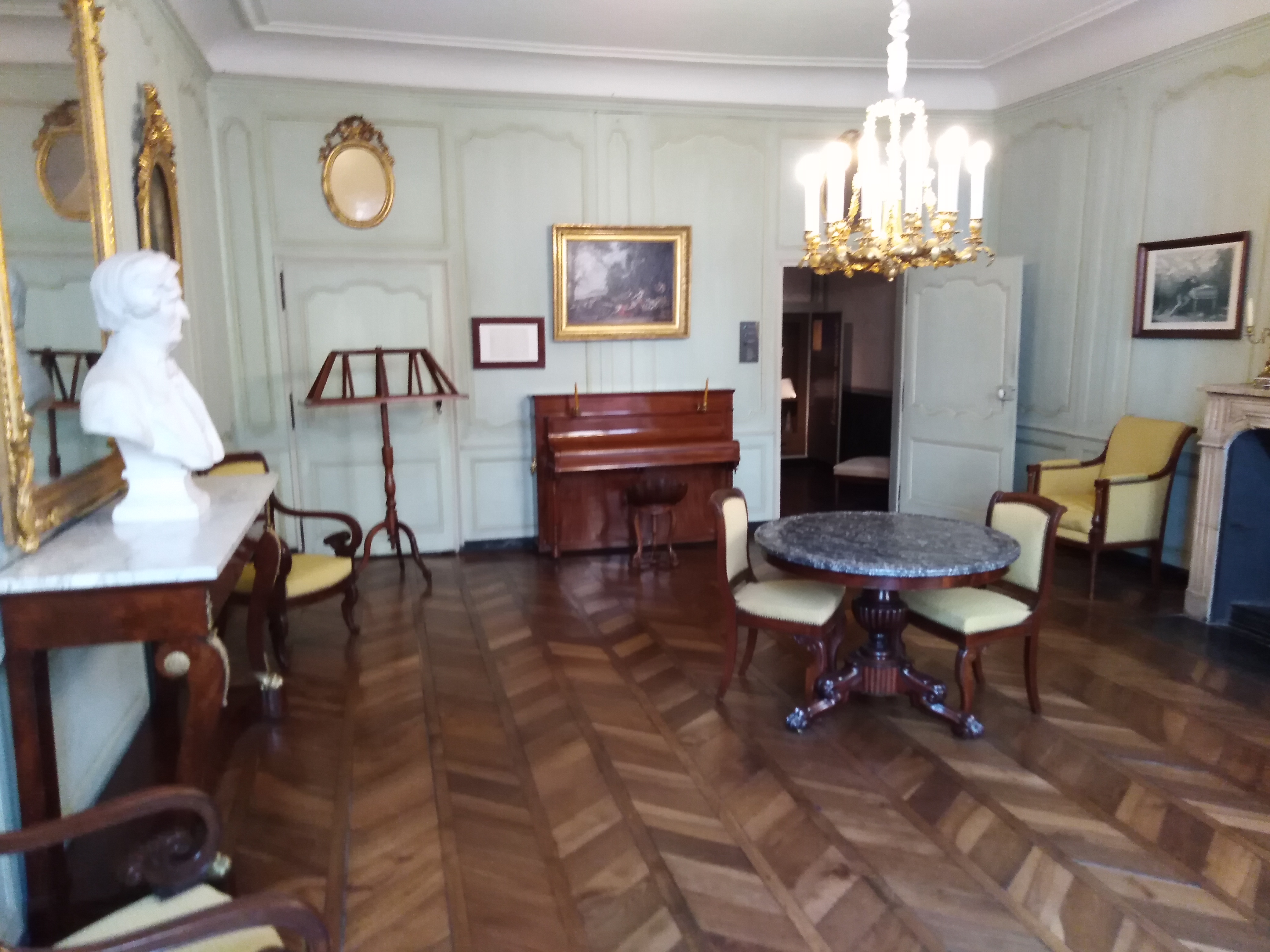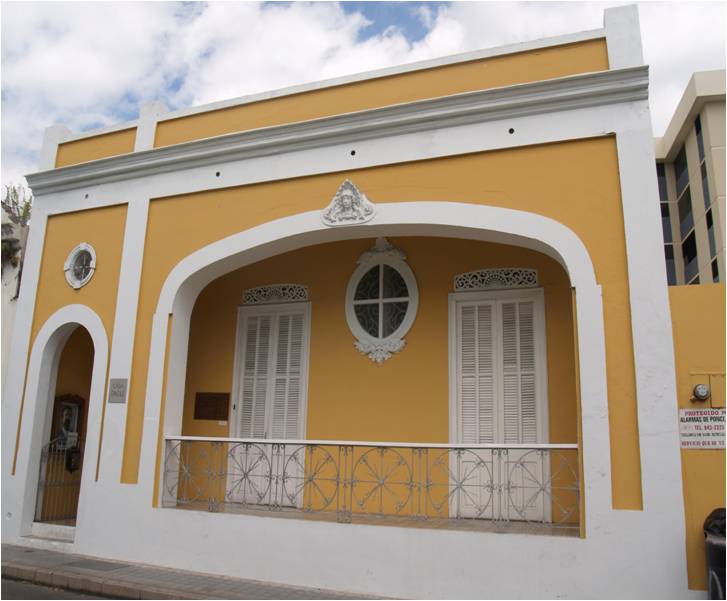|
Musée Hector-Berlioz
The Musée Hector-Berlioz (Hector Berlioz Museum) is a museum about the composer Hector Berlioz, in La Côte-Saint-André, Isère, France. The building is the composer's birthplace. History The house was built about 1680; about 50 years later it was acquired by Berlioz's great-grandparents, and largely rebuilt at about that time. Hector Berlioz was born here on 11 December 1803, and lived here until he was 18. It continued to be occupied by the family until the death of the composer's father Dr Louis Berlioz in 1848. The town placed a memorial plaque on the house in 1885."Berlioz's birthplace" The Hector Berlioz Website. Retrieved 27 May 2019. The Hector Berlioz Website. Retrieved 27 May 2019. In 1932 ... [...More Info...] [...Related Items...] OR: [Wikipedia] [Google] [Baidu] |
La Côte-Saint-André
La Côte-Saint-André () is a commune in the Isère department in southeastern France. Populations Personalities * Hector Berlioz was born here. His birthplace is now a museum: Musée Hector-Berlioz. * Philippe du Contant de la Molette was born here. Archaeological finds File:Char-gaulois-d-apparat.jpg, Cult wagon, Urnfield culture/ Halstatt culture The Hallstatt culture was the predominant Western and Central European culture of Late Bronze Age (Hallstatt A, Hallstatt B) from the 12th to 8th centuries BC and Early Iron Age Europe (Hallstatt C, Hallstatt D) from the 8th to 6th centuries B ..., c. 1300-800 BC. See also * Communes of the Isère department References Communes of Isère Hector Berlioz Isère communes articles needing translation from French Wikipedia {{Isère-geo-stub ... [...More Info...] [...Related Items...] OR: [Wikipedia] [Google] [Baidu] |
Isère
Isère ( , ; frp, Isera; oc, Isèra, ) is a landlocked department in the southeastern French region of Auvergne-Rhône-Alpes. Named after the river Isère, it had a population of 1,271,166 in 2019.Populations légales 2019: 38 Isère INSEE Its prefecture is . It borders to the northwest, to the north, |
Biographical Museum
A biographical museum is a museum dedicated to displaying items relating to the life of a single person or group of people, and may also display the items collected by their subjects during their lifetimes. Some biographical museums are located in a house, such as Casa Paoli, Casa Paoli Museum or other site associated with the lives of their subjects. Other examples of house-based biographical museums are Quinta de Bolívar in Bogotá, Colombia, the Keats-Shelley Memorial House, in Rome, Italy, and the National Museum Gjergj Kastrioti Skënderbeu, Gjergj Kastrioti Skënderbeu National Museum in Krujë, Albania. Some homes of famous people house famous collections in the sphere of the owner's expertise or interests in addition to collections of their biographical material; one such example is The Wellington Museum, Apsley House, London, home of the Arthur Wellesley, 1st Duke of Wellington, Duke of Wellington, which, in addition to biographical memorabilia of the Arthur Wellesley, ... [...More Info...] [...Related Items...] OR: [Wikipedia] [Google] [Baidu] |
Hector Berlioz
In Greek mythology, Hector (; grc, Ἕκτωρ, Hektōr, label=none, ) is a character in Homer's Iliad. He was a Trojan prince and the greatest warrior for Troy during the Trojan War. Hector led the Trojans and their allies in the defense of Troy, killing countless Greek warriors. He was ultimately killed in single combat by Achilles, who later dragged his dead body around the city of Troy behind his chariot. Etymology In Greek, is a derivative of the verb ἔχειν ''ékhein'', archaic form * grc, ἕχειν, hékhein, label=none ('to have' or 'to hold'), from Proto-Indo-European *'' seɡ́ʰ-'' ('to hold'). , or as found in Aeolic poetry, is also an epithet of Zeus in his capacity as 'he who holds verything together. Hector's name could thus be taken to mean 'holding fast'. Description Hector was described by the chronicler Malalas in his account of the ''Chronography'' as "dark-skinned, tall, very stoutly built, strong, good nose, wooly-haired, good beard, sq ... [...More Info...] [...Related Items...] OR: [Wikipedia] [Google] [Baidu] |
Édouard Herriot
Édouard Marie Herriot (; 5 July 1872 – 26 March 1957) was a French Radical politician of the Third Republic who served three times as Prime Minister (1924–1925; 1926; 1932) and twice as President of the Chamber of Deputies. He led the first Cartel des Gauches. Under the Fourth Republic, he served as President of the National Assembly until 1954. An historian by occupation, Herriot was elected to the Académie Française's eighth seat in 1946. Life Hérriot was born at Troyes, France on 5 July 1872. He served as Mayor of Lyon from 1905 until his death, except for a brief period from 1940 to 1945, when he was exiled to Germany for opposing the Vichy regime. As mayor, Herriot improved relations between municipal government and local unions, increased public assistance funds, and began an urban renewal programme, amongst other measures. He died in Lyon on 26 March 1957. He is buried at the Loyasse Cemetery. Herriot's First Ministry, 14 June 1924 – 17 April 1925 *Édo ... [...More Info...] [...Related Items...] OR: [Wikipedia] [Google] [Baidu] |
Monument Historique
''Monument historique'' () is a designation given to some national heritage sites in France. It may also refer to the state procedure in France by which National Heritage protection is extended to a building, a specific part of a building, a collection of buildings, a garden, a bridge, or other structure, because of their importance to France's architectural and historical cultural heritage. Both public and privately owned structures may be listed in this way, as well as movable objects. As of 2012 there were 44,236 monuments listed. The term "classification" is reserved for designation performed by the French Ministry of Culture for a monument of national-level significance. Monuments of lesser significance may be "inscribed" by various regional entities. Buildings may be given the classification (or inscription) for either their exteriors or interiors. A monument's designation could be for a building's décor, its furniture, a single room, or even a staircase. An example is ... [...More Info...] [...Related Items...] OR: [Wikipedia] [Google] [Baidu] |
Grand Salon De La Maison Berlioz
Grand may refer to: People with the name * Grand (surname) * Grand L. Bush (born 1955), American actor * Grand Mixer DXT, American turntablist * Grand Puba (born 1966), American rapper Places * Grand, Oklahoma * Grand, Vosges, village and commune in France with Gallo-Roman amphitheatre * Grand Concourse (other), several places * Grand County (other), several places * Grand Geyser, Upper Geyser Basin of Yellowstone * Grand Rounds National Scenic Byway, a parkway system in Minneapolis, Minnesota, United States * Le Grand, California, census-designated place * Grand Staircase, a place in the US. Arts, entertainment, and media * ''Grand'' (Erin McKeown album), 2003 * ''Grand'' (Matt and Kim album), 2009 * ''Grand'' (magazine), a lifestyle magazine related to related to grandparents * ''Grand'' (TV series), American sitcom, 1990 * Grand piano, musical instrument * Grand Production, Serbian record label company * The Grand Tour, a new British automobile show Oth ... [...More Info...] [...Related Items...] OR: [Wikipedia] [Google] [Baidu] |
Maisons Des Illustres
''Maisons des Illustres'' is a mark of quality (French: ''label de qualité'') of buildings in France, indicating places where the purpose is to preserve the memory of people distinguished in the political, social and cultural history of France."Label « Maisons des illustres »" Ministère de la Culture. Retrieved 31 May 2019. It was created by , the Minister of Culture, in September 2011, to make known to the public the places that keep collections related to personalities, and give them a higher profile. He said that they should be "more than reliquaries, but real living homes". Initially, 111 bui ... [...More Info...] [...Related Items...] OR: [Wikipedia] [Google] [Baidu] |
List Of Music Museums
This worldwide list of music museums encompasses past and present museums that focus on musicians, musical instruments or other musical subjects. Argentina * – Mina Clavero * Academia Nacional del Tango de la República Argentina – Buenos Aires * – La Plata * , dedicated to The Beatles – Buenos Aires Armenia * House-Museum of Aram Khachaturian, dedicated to Aram Khachaturian – Yerevan * Charles Aznavour Museum, dedicated to Charles Aznavour – Yerevan Australia * National Film and Sound Archive – Acton, Australian Capital Territory * Tandanya National Aboriginal Cultural Institute – Adelaide, South Australia * National Library of Australia – Canberra, Australian Capital Territory * Australian Country Music Hall of Fame – Tamworth, New South Wales * Slim Dusty Centre – Kempsey, New South Wales * Grainger Museum, dedicated to Percy Grainger – University of Melbourne, Victoria * Australian Performing Arts Collection – Melbourne * Arts Centre Mel ... [...More Info...] [...Related Items...] OR: [Wikipedia] [Google] [Baidu] |
Biographical Museums In France
A biography, or simply bio, is a detailed description of a person's life. It involves more than just the basic facts like education, work, relationships, and death; it portrays a person's experience of these life events. Unlike a profile or curriculum vitae ( résumé), a biography presents a subject's life story, highlighting various aspects of their life, including intimate details of experience, and may include an analysis of the subject's personality. Biographical works are usually non-fiction, but fiction can also be used to portray a person's life. One in-depth form of biographical coverage is called legacy writing. Works in diverse media, from literature to film, form the genre known as biography. An authorized biography is written with the permission, cooperation, and at times, participation of a subject or a subject's heirs. An autobiography is written by the person themselves, sometimes with the assistance of a collaborator or ghostwriter. History At first, bio ... [...More Info...] [...Related Items...] OR: [Wikipedia] [Google] [Baidu] |
Music Museums In France
Music is generally defined as the The arts, art of arranging sound to create some combination of Musical form, form, harmony, melody, rhythm or otherwise Musical expression, expressive content. Exact definition of music, definitions of music vary considerably around the world, though it is an aspect of all human societies, a cultural universal. While scholars agree that music is defined by a elements of music, few specific elements, there is Elements of music#Selection of elements, no consensus on their precise definitions. The creation of music is commonly divided into musical composition, musical improvisation, and musical performance, though the topic itself extends into #Academic study, academic disciplines, Music journalism, criticism, Philosophy of music, philosophy, and Music psychology, psychology. Music may be performed or improvised using a vast range of musical instrument, instruments, including the human voice. In some musical contexts, a performance or composi ... [...More Info...] [...Related Items...] OR: [Wikipedia] [Google] [Baidu] |
Museums In Isère
A museum ( ; plural museums or, rarely, musea) is a building or institution that Preservation (library and archival science), cares for and displays a collection (artwork), collection of artifacts and other objects of artistic, culture, cultural, history, historical, or science, scientific importance. Many public museums make these items available for public viewing through display case, exhibits that may be permanent or temporary. The largest museums are located in major cities throughout the world, while thousands of local museums exist in smaller cities, towns, and rural areas. Museums have varying aims, ranging from the conservation and documentation of their collection, serving researchers and specialists, to catering to the general public. The goal of serving researchers is not only scientific, but intended to serve the general public. There are many types of museums, including art museums, natural history museums, science museums, war museums, and children's museums. Ac ... [...More Info...] [...Related Items...] OR: [Wikipedia] [Google] [Baidu] |






